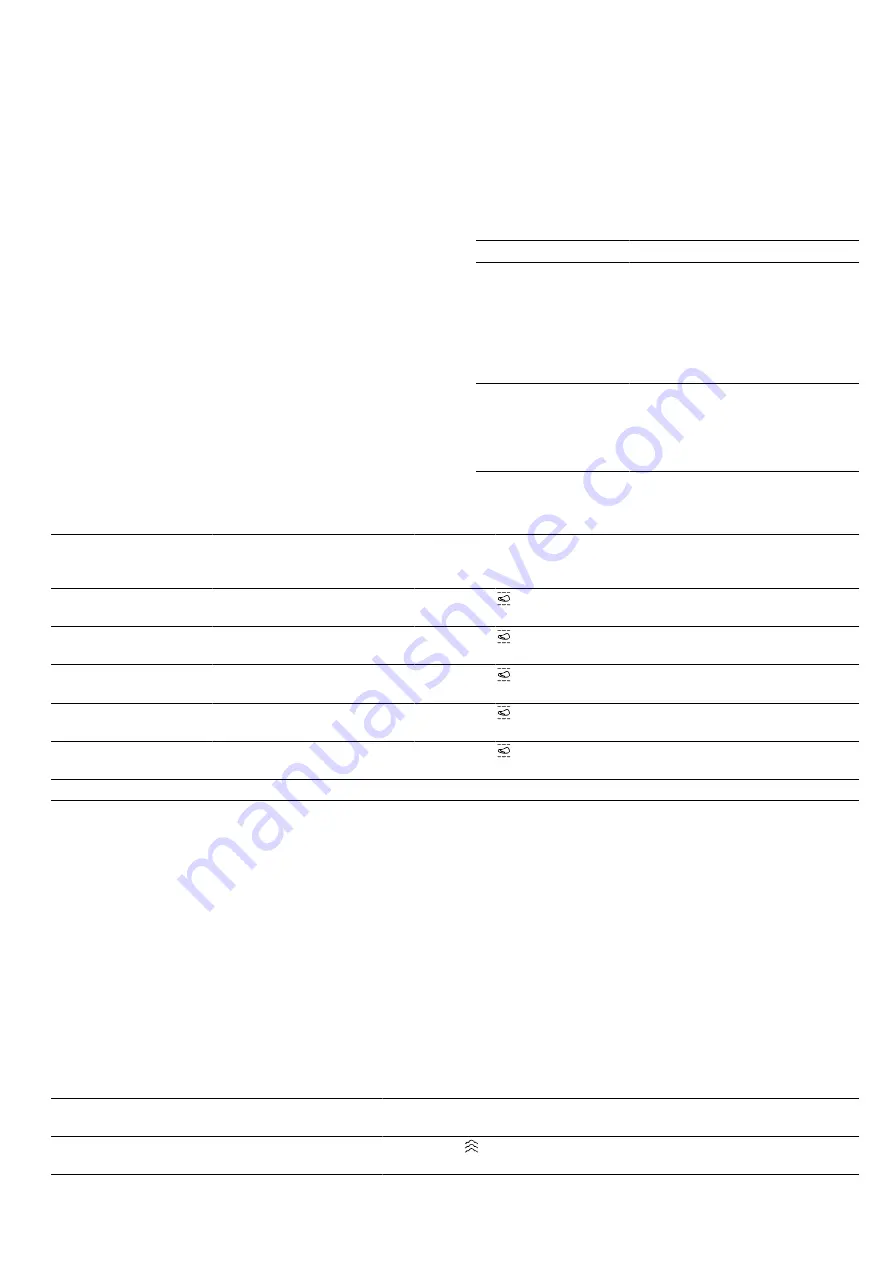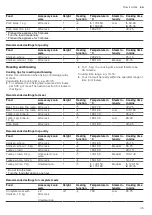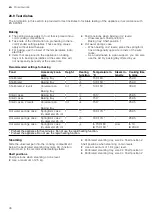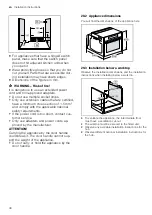
en
How it works
42
28.7 Special cooking methods and other
applications
Information and recommended settings for special
cooking methods and other applications, e.g. slow
cooking.
Slow cooking
Cook prime cuts of meat slowly at a low temperature,
e.g. tender cuts of beef, veal, lamb or poultry.
Slow cooking poultry or meat
Note:
When using the slow cooking type of heating,
you cannot delay the start of the programme by setting
an end time.
Requirement:
The cooking compartment is cold.
1.
Use fresh, clean, hygienic meat without bones.
2.
Place the cookware onto the wire rack at level 1 in
the cooking compartment.
3.
Preheat the cooking compartment and cookware for
approx. 15 minutes.
4.
Sear the meat on all sides on the hob at a very high
heat.
5.
Immediately place the meat into the pre-warmed
cookware in the cooking compartment.
To ensure that the temperature in the cooking com-
partment remains constant, keep the cooking com-
partment door closed during slow cooking.
Tips for slow cooking
Here you will find tips for achieving good results when
slow cooking food.
Issue
Tip
You want to slow
cook a duck breast.
¡
Place the cold duck breast
into a pan.
¡
Sear the skin side first.
¡
Slow cook the duck breast.
¡
After slow cooking, grill the
duck breast for 3 to
5 minutes until crispy.
You want to serve
your slow-cooked
meat as hot as pos-
sible.
¡
Preheat the serving plate.
¡
Make sure that the sauces
that accompany the duck
breast are very hot when
you serve them.
Recommended settings for slow cooking
Food
Accessory/
cookware
Height
Searing
time in
mins
Heating
function
Temperat-
ure in °C
Steam
level
Cooking time
in mins
Duck breast, medium
rare, 300 g each
Uncovered
cookware
1
6-8
95
1
-
45-60
Fillet of pork, whole
Uncovered
cookware
1
4-6
85
1
-
45-70
Fillet of beef, 1 kg
Uncovered
cookware
1
4-6
85
1
-
90-120
Veal medallions,
4 cm thick
Uncovered
cookware
1
4
80
1
-
40-60
Saddle of lamb,
boned, 200 g each
Uncovered
cookware
1
4
85
1
-
30-45
1
Preheat the appliance.
Sterilisation and hygiene
You can sterilise heat-resistant cookware or baby
bottles that are in perfect condition. The process is
equivalent to normal sterilisation by boiling.
Sterilising bottles
1.
Clean the bottles with a bottle brush immediately
after use.
2.
Wash the bottles in the dishwasher.
3.
Place the bottles into the steaming tray (size XL) in
such a way that they do not touch one another.
4.
Start the "Sterilise" programme.
5.
Dry the bottles with a clean cloth.
6.
Wipe down the appliance interior after sterilising.
Useful information on sterilising
Please take note of the following information if you are
sterilising cookware.
¡
You can use your appliance to prepare jam jars or
preserving jars and their lids.
¡
You can perform an additional processing step at
the end in order to improve the jam's shelf life.
¡
Sterilise only heat-resistant cookware that is suitable
for cooking with steam.
¡
Only use clean jars and lids that are in perfect con-
dition.
¡
Ideally, you should wash the cookware in the dish-
washer before sterilising it.
Recommended settings for hygiene
Food
Accessory/cook-
ware
Height
Heating
function
Temperature in
°C
Steam in-
tensity
Cooking time
in mins
Sterilise clean cookware
Perforated steam-
ing tray
1
100
-
15-20











































